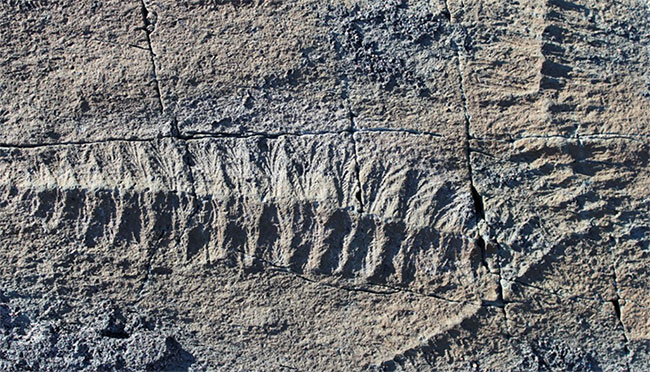Detecting fossilized animal fossils dating to 16,000 years in Uruguay
According to a reporter in Central America, on September 3, Uruguay archaeologists announced that the country has just discovered the fossil of a touching tooth (Glyptodon) dating back to 16,000 years, in the southwestern city of Carmelo.

Detecting fossilized animal fossils dating to 16,000 years in Uruguay.(Photo: cablenoticias.tv)
Speaking to reporters, the expert of the National Museum of Natural History, Andrés Rinderknecht said fossils include the hard shell and bones of the Glyptodon . This is a large herbivore of the Glyptodontidae family, the ancestor of Armadillo, lived in the Ice Age 50,000 years ago, at the same time as the mastodon (mastodon) and lazy giant (megatherium). Heavy rains made a part of the Glyptodon shell near the stream, so a farmer from Carmelo city discovered the fossil.
Mr. Rinderknecht said the Glyptodon weighs between 800kg and 1 ton, its fossil bones weigh up to 80kg. Glyptondon extinct about 8,000 years ago like mastodons. So far, the cause of that extinction remains a mystery. According to the expert, there are two theories that make these giant animals extinct. It is due to climate change, global warming and Ice Age ending, or people hunting them to find food.
Uruguay currently has 6 intact skeletons of Glyptodon, which are on display in the states of Colonia, San Jose and Canelones.
- Excavation of extinct animal fossils in Lang Son
- The discovery of fossilized animal fossils dating back 600,000 years
- The discovery of animal fossils dating to 42 million years in Brazil
- Detecting complete bone fossils of a dinosaur
- Discover the oldest animal fossils
- Fossilized turtle discovered 45 million years in Antarctica
- Australia: Fossilized a fish species dating back 380 million years
- The famous electric and water village in Uruguay
- Discover the oldest animal in Earth
- Detecting fossil prehistoric monsters died during childbirth
- Australia found fossils tens of millions of years old
- CH Dominica: Detecting fossils of ancient orchids
 Discovered an ancient centipede fossil 99 million years old
Discovered an ancient centipede fossil 99 million years old Discovered bat-like dinosaurs in China
Discovered bat-like dinosaurs in China Discovered a 200-year-old bronze cannon of the coast
Discovered a 200-year-old bronze cannon of the coast Discover 305 million-year-old spider fossils
Discover 305 million-year-old spider fossils